Last-Minute NYC Holiday Gift Guide 🎁
We’ve created a holiday gift guide with presents for the intrepid New Yorker that should arrive just in time—


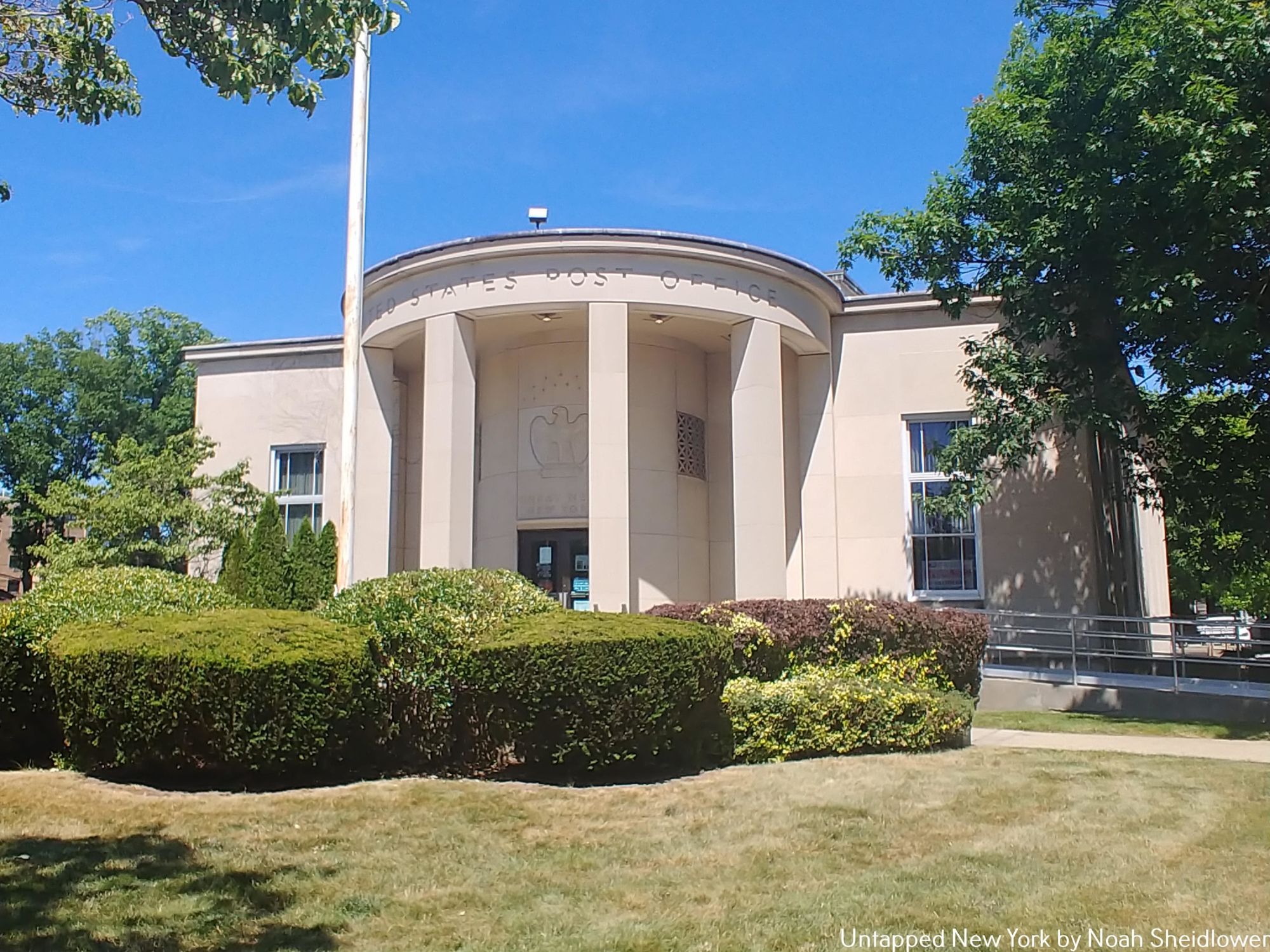
US Post Office
Great Neck, a region on the North Shore of Nassau County that encompasses nine villages, is one of the most culturally diverse and historic places in Nassau County. The area has become both an unofficial Chinatown and a little Iran due to high concentration of Iranians and Chinese families. During the Roaring Twenties, Great Neck became one of Long Island’s most wealthy communities, with figures like the Marx Brothers, F. Scott Fitzgerald, and Eddie Cantor buying homes in Great Neck. Throughout the area are a mix of old and new buildings, from rustic homes from the beginning of the 20th century to ornately designed synagogues to a recently renovated modernist library. Many of these historic sites can be found on the Great Neck Historical Society’s list of Great Neck Historical Society Plaques. Here is our guide to 10 historic and significant sites to discover on the Great Neck peninsula!
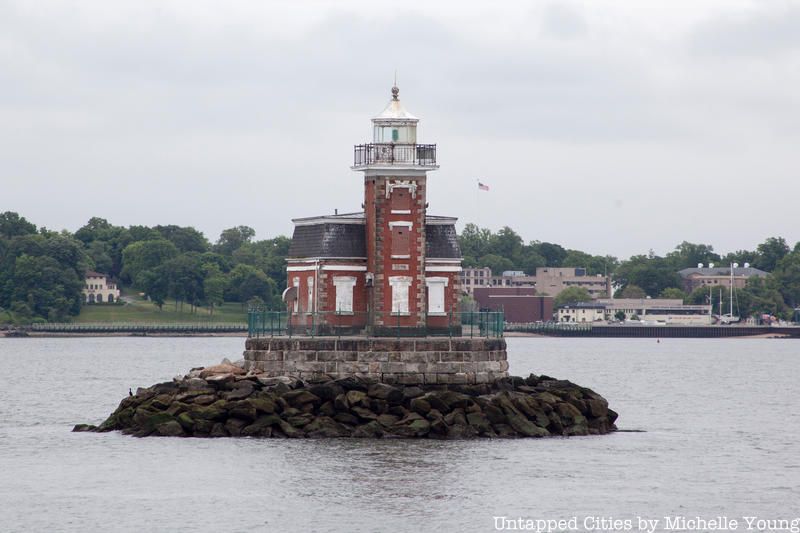
Stepping Stones Light is a Victorian-style lighthouse that sits in the Long Island sound between Kings Point and the Bronx, and its light is in current use. Although it is not open to the public, it can be seen from nearby Steppingstone Park and the US Merchant Marine Academy, which is currently closed during the pandemic, or by boat from the water.
The lighthouse and park get its name from a Siwanoy legend in which the devil tossed huge boulders into the Long Island Sound to escape the tribe’s warrior and magic, and these boulders would be called the devil’s “stepping stones.” The lighthouse is made of red brick in a square shape, and it was added to the National Register for Historic Places in 2005. Since then, the National Park Service and local organizations like the Great Neck Historical Society raised thousands of dollars to restore the lighthouse.

US Post Office
The US Post Office in Great Neck Plaza is one of the village’s only buildings on the National Register for Historic Places (NRHP), constructed from 1939-1940. The building was designed by architect William Dewey Foster, hired by the Office of the Supervising Architect involved with many New Deal-era structures. The limestone pentagonal building was designed in the Classical Revival style and features a relief of an eagle below 13 stars designed by Gaetano Cecere. The post office is also known for the four square columns that support its semicircular entrance.
A small relief by the entrance notes the men in charge at the time of the building’s construction, such as Henry Morgenthau Jr., Secretary of the Treasury, and James A. Farley, Postmaster General. The building was added to the NRHP in 1989.
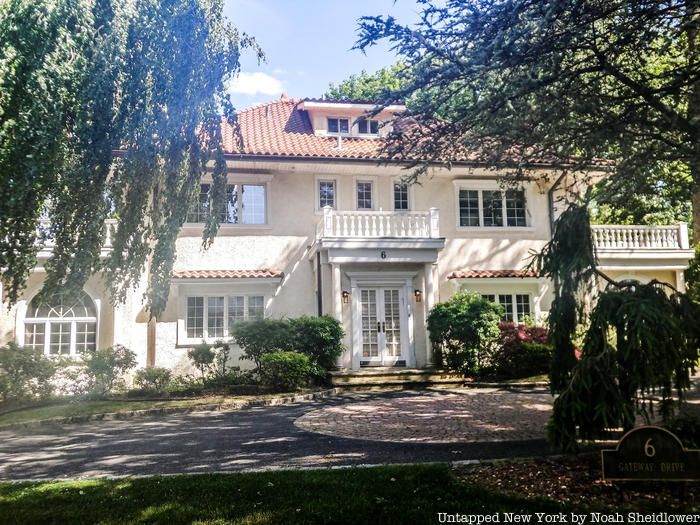 F. Scott Fitzgerald House
F. Scott Fitzgerald House
Although many people remember the extravagance and wealth of West Egg in The Great Gatsby, few know that West Egg corresponds to Great Neck, where author F. Scott Fitzgerald lived. Many residents have nicknamed a number of mansions in Kings Point the “Gatsby Mansion,” and all the way north on the peninsula is a street named Gatsby Lane. Yet, F. Scott Fitzgerald’s old home is a bit more obscure, situated at 6 Gateway Drive in Great Neck Estates. Fitzgerald lived at the Mediterranean-style home with his wife Zelda between October 1922 and April 1924 during the Roaring Twenties.
The home has been recently renovated, but many of the original features from the 1918 remain, like arched windows and a wood-burning fireplace. It is believed that Fitzgerald wrote the first three or so chapters of The Great Gatsby in a room about the home’s garage. As of 2015, the home was valued at slightly under $4 million.
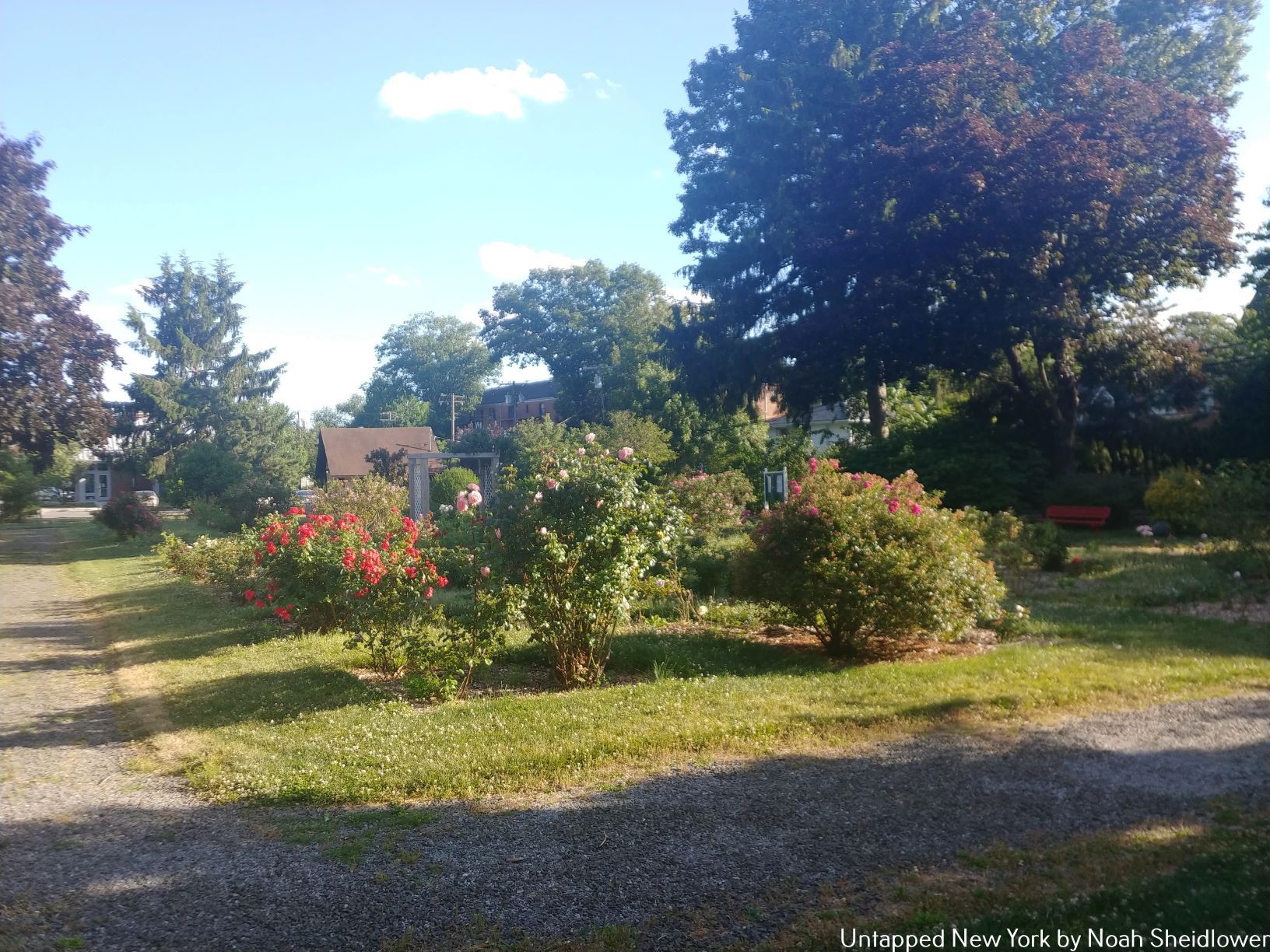
Rose Garden at Village Green
Great Neck’s Village Green is one of the most versatile and popular locations in the village; the Village Green is home to a Veterans’ Memorial, a butterfly garden, a walking course, a rose garden, and many benches arranged around its central fountain. The quaint Rose Garden was designed and created by notable landscape architect Beatrix Farrand in the late 1920s. Although one of the most beautiful spots on the peninsula, the park has quite a fascinating yet strange history.
The Village Green was built on the site of the property of William Gould Brokaw, a wealthy industrialist who purchased a 125-acre estate in the late 1800s. By the late 1800s, Brokaw had inherently over $4 million from his family, specifically from his father who was a partner in a successful clothing business. His estate, Nirvana, included a mansion, a half-mile horse race track, and polo fields, hence why nearby street names include Gould Street, Brokaw Lane, and Polo Road. Brokaw also owned many race cars, including a number of Renaults, as well as a Dumont airship. However, Brokaw was also involved in a number of affairs, and he was sued by several women for millions of dollars. According to the Great Neck Historical Society, one of his divorces made national headlines for over a year across dozens of publications.
After Brokaw sold Nirvana, Farrand and Louise Eldridge took responsibility for developing the Village Green. Eldridge became mayor of Saddle Rock in 1927, believed to have been the first woman mayor in New York State. Eldridge and her husband Roswell built a permanent home for the village library, currently the historic Great Neck House. The Eldridges were also responsible for creating the Great Neck Park District back in 1916. After donating hundreds of trees to All Saints Church in Kings Point, Eldridge began work with Farrand, the latter of whom submitted landscape drawings from 1922 to 1924. The bandstand, designed by Farrand, still remains, as well as the basic design of the rose garden.
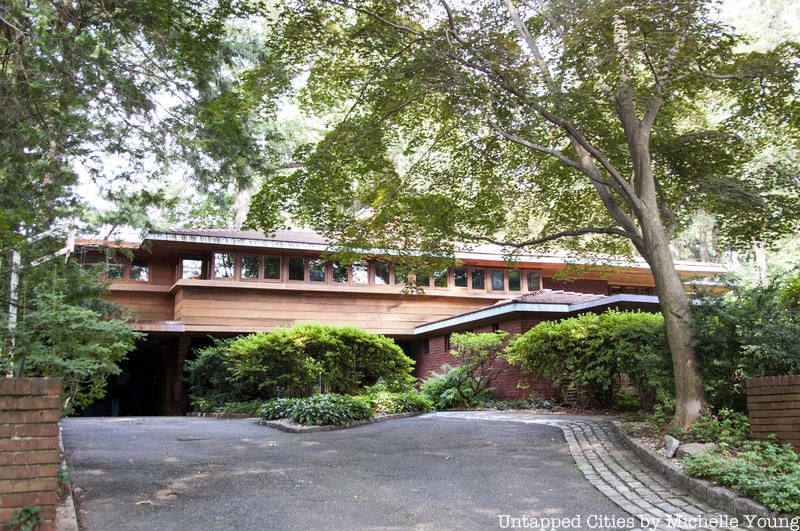
The Ben Rebhuhn House is the only home designed by Frank Lloyd Wright on all of Long Island. The house was designed in 1937 in Great Neck Estates for Benjamin and Anne Rebhuhn, a publisher and a dress designer, who published “morally progressive” content such as articles on birth control.
Wright designed the house in the Usonian style, which refers to Wright’s vision of American middle class homes that stress individuality and natural elements. The home features a two-story living room and library with floor-to-ceiling windows. The home was constructed from red cypress board and brick and red roof tile. At the time, the home was constructed at a cost of $35,000, which is over $600,000 in today’s dollars.
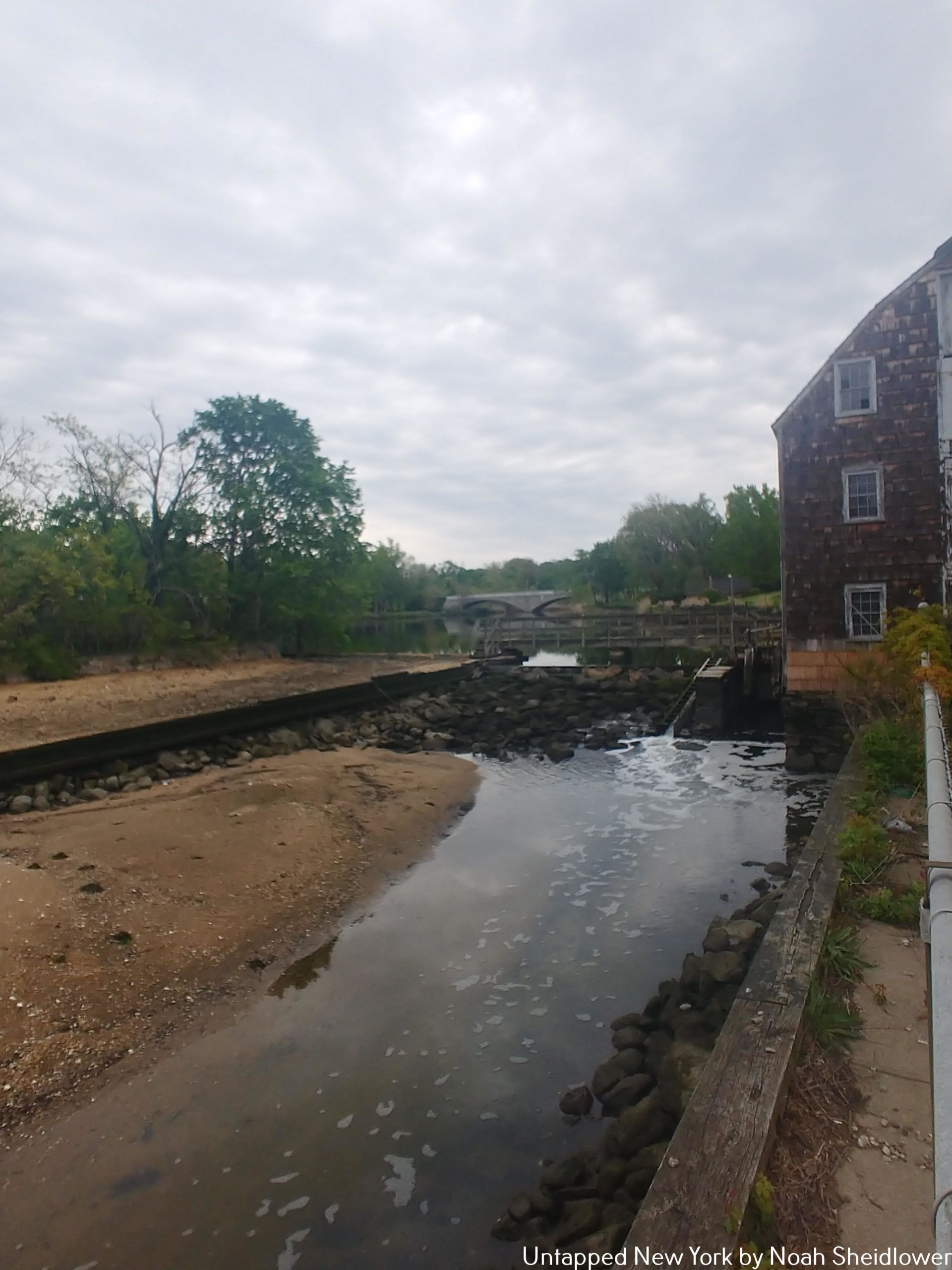
Saddle Rock Grist Mill and millpond
The Saddle Rock Grist Mill is perhaps one of Great Neck’s most significant sites, constructed in the 1700s. It is one of Long Island’s few remaining tidal mills, used to grind corn and wheat. The grist mill sits adjacent to a millpond, which flows by the newly-renovated Great Neck Library. The grist mill was eventually sold to the Udall family, who name nearby Udall’s Cove Park Preserve, a Forever Wild preserve. It was then inherited by Louise Eldridge, and after her death, the grist mill became a museum.
However, recently the grist mill has greatly deteriorated, and to this date is remains temporarily closed. Many of the mill’s original structures, including the wheel and floorboards, have been destroyed, but not all hope is lost, as the grindstone and grinding mechanism are still in good condition. Today, the grist mill can be seen from Saddle Rock Park or from the 9/11 Memorial Bridge.
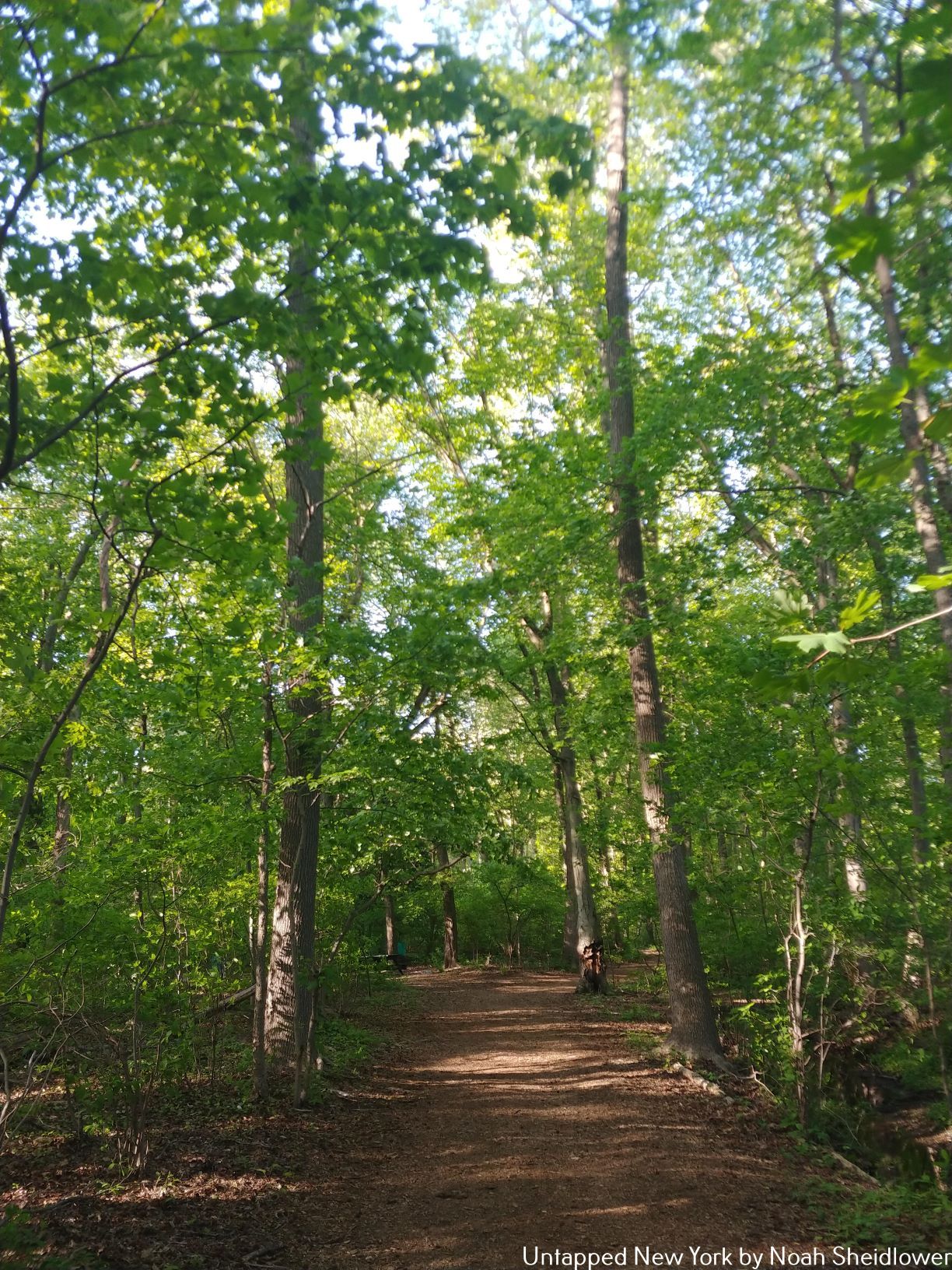
Kings Point Park hiking trail
Kings Point Park is a 175-acre park on the north of the peninsula, with over five miles of hiking trails. Situated between Steamboat and Redbrook Roads, the park was leased to the Great Neck Park District in 1938, yet it was just a swamp area at the time.
The Park District developed the park into a beautiful forest, preserve, and recreational facility with 26 picnic areas, baseball diamonds, and tennis courts. The park is also home to horseshoe pitches, a sled hill, and cross-country skiing trails. The hiking trails feature wooden bridges which cross over Mitchells Creek, as well as remnants of historic homes and structures.
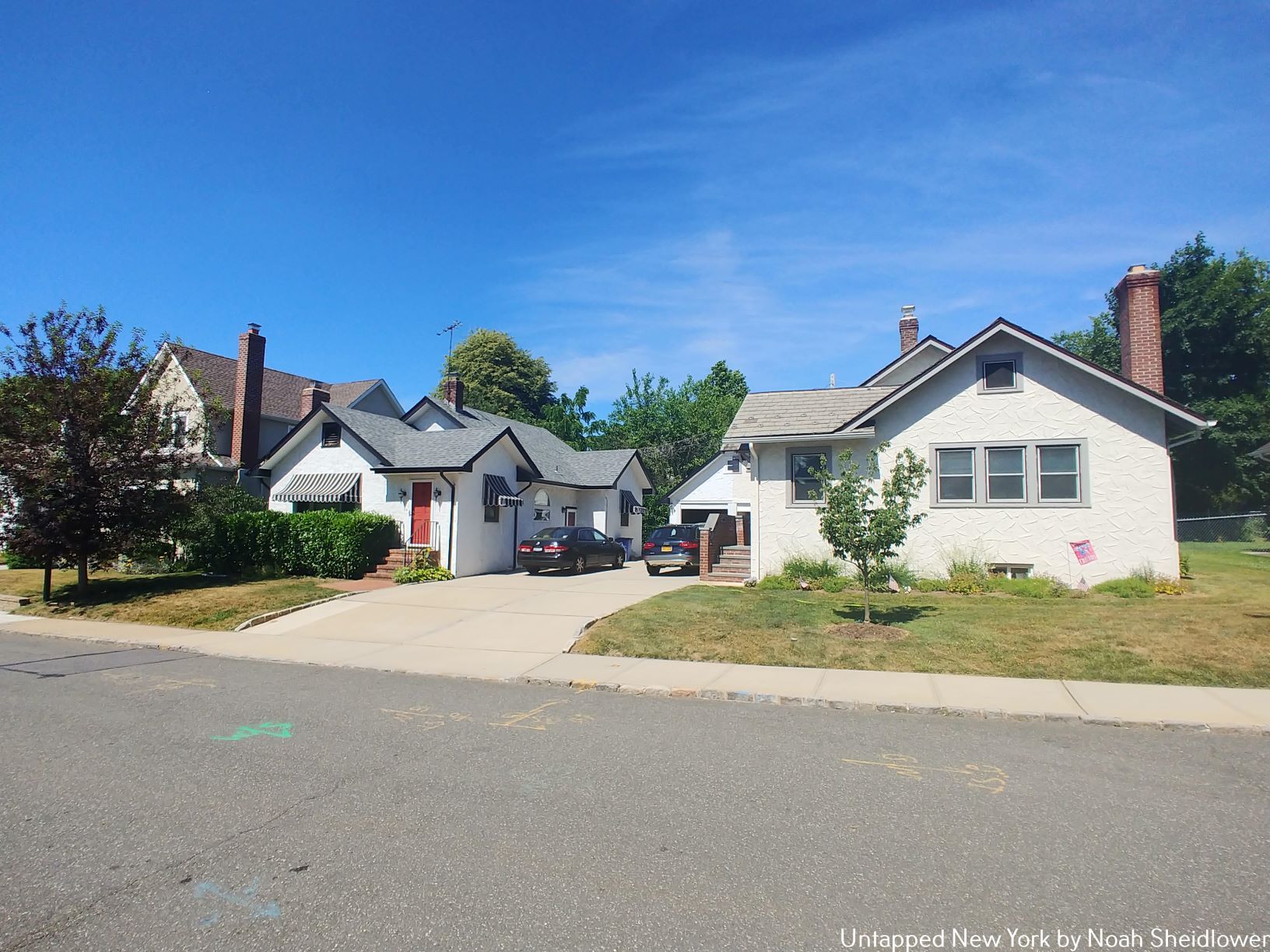
Crampton Avenue Houses
The homes along Crampton Avenue in Great Neck are most likely obscure even for Great Neck residents, yet the homes date back to 1928 after John and James E. Crampton purchased the land and built 21 bungalows as rental properties. At the time, Great Neck was experiencing dramatic real estate growth, and the Cramptons constructed the homes to further develop the village’s economy. The homes were originally one-story, two-bedroom bungalows, and many of the homes have been altered to add a second story.
Crampton Avenue was a working-class, immigrant neighborhood in the 1930s, and homes were rented for around $60 a month, now around $900. The Great Neck Historical Society awarded 11 Crampton Avenue with a Heritage Recognition Plaque after the Speelmans, both history professors at the US Merchant Marine Academy, reached out to the historical society to alert them of the homes’ history. They noted that the buildings were constructed from materials no longer available and were well preserved since the 1920s.
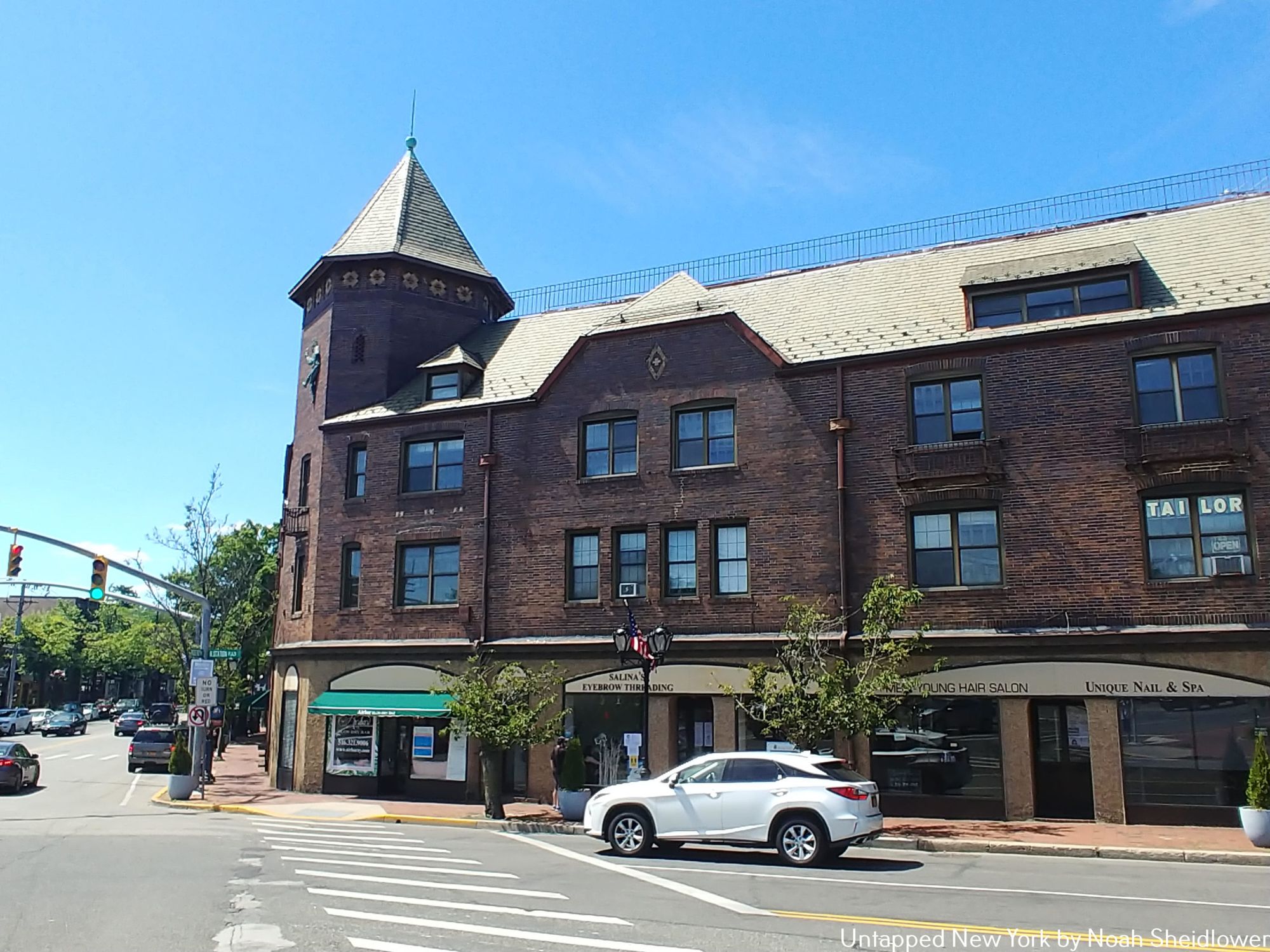
Grace Building
The Grace and Thomaston Buildings are two historic buildings in Great Neck Plaza listed on the National Register of Historic Places. The buildings were both built by the W. R. Grace Company, a chemical business founded by Irish-American politician and Mayor of New York City William Russell Grace. The namesake Grace building was constructed in 1914, while the Thomaston Building, named for a town in Maine where Grace’s wife Lillius Gilchrist grew up, was built in 1926.
The Grace Building, at 11 Middle Neck Road, is a 3 1/2-story brick building shaped like a chevron and is one of the area’s largest Tudor-style buildings. The building sits right across from the Great Neck Long Island Railroad Station and it features architectural elements like a large octagonal tower and wrought iron balconies. The building today houses offices, apartments, and stores like hair salons and beauty parlors.
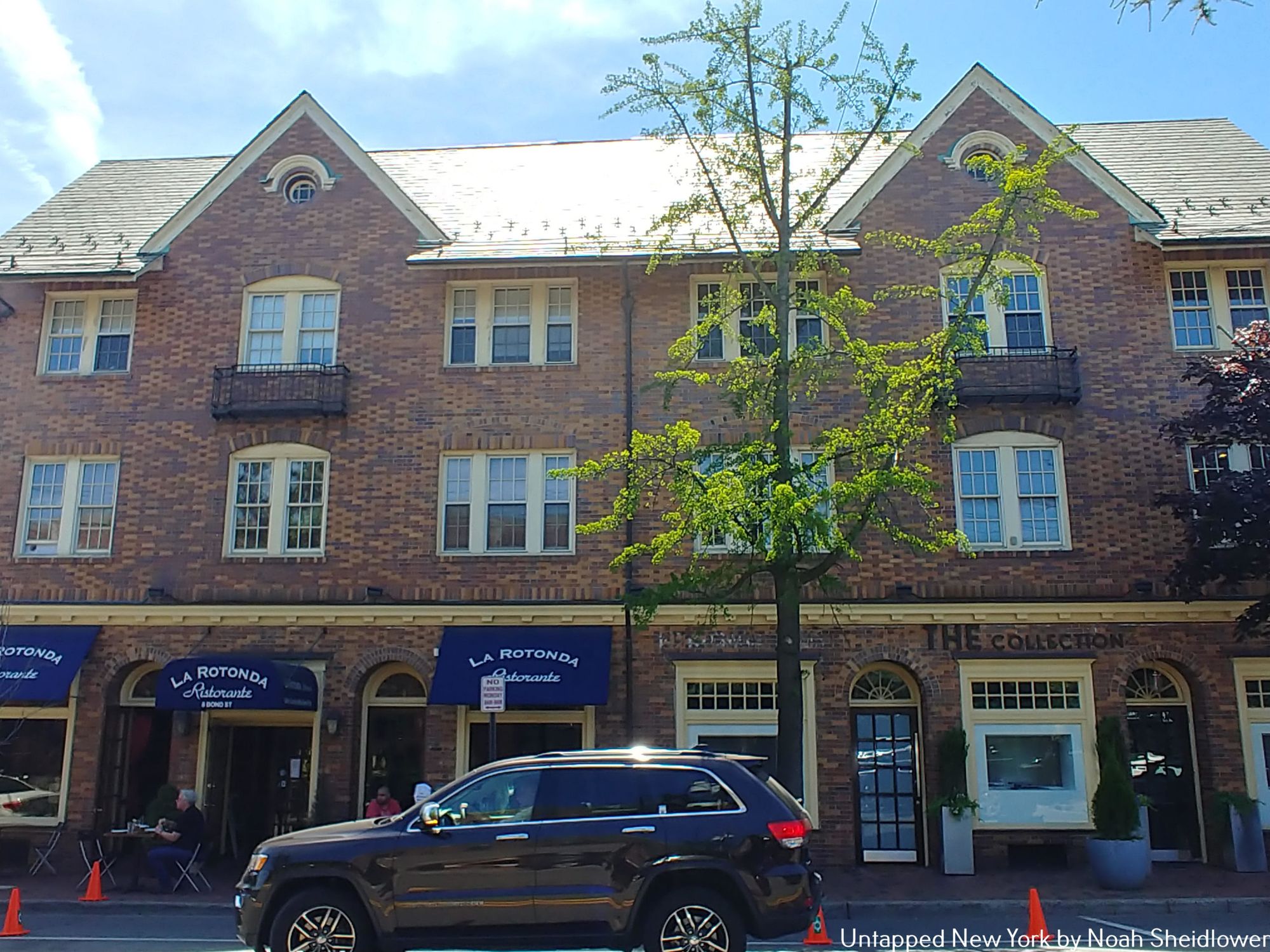
Thomaston Building
The Thomaston Building is a 3 1/2-story brick building on Bond Street, a quaint Great Neck street with a number of eateries and small businesses. The building originally served as the headquarters for W. R. Grace Company’s international real estate operations until 1971, when the company moved to Manhattan. In the 1970s, the building featured a small shopping mall and served as the Village Hall for Great Neck Plaza, and in the 1980s, the building was completely restored by Patrick Silberstein. The Georgian Revival-style building features architectural elements like oculus windows and a cross-gabled roof. A number of businesses like Italian restaurant La Rotonda and currently occupy the building, which was added to the NRHP in 1978.
 A Handful of Keys
A Handful of Keys
Great Neck is one of Long Island’s most artistic communities, present in the urban landscape from colorful benches by the town’s plaza to a mural on the side of a parking garage to a headless giraffe sculpture in the Kensington Green. However, perhaps the most well-known public artwork in Great Neck is “A Handful of Keys,” a realistic mural painted by William Cochran. The 17-by-8-foot mural depicts six children with musical instruments about to have their music lessons.
The New York Times considers it a “devilishly well-planned illusion” in the French style of trompe l’oeil, which tricks the mind into believing a flat painting is a real three-dimensional scene. Mayor Jean Celender commissioned Cochran to create the dynamic and realistic mural, which cost over $75,000. Cochran had collected dozens of antique keys from around the world, and he included images of some of them in his mural to symbolize discovery.
Next, check out 10 beautiful places to discover in Nassau County, Long Island.
Subscribe to our newsletter